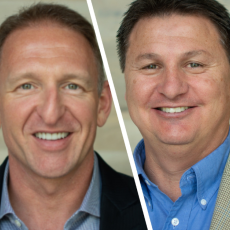What notable advancements has BiOWiSH achieved since our last conversation in March?
Since then, BiOWiSH has taken significant strides in mainstream commercialization. Firstly, we have expanded our collaborations with a growing number of fertilizer companies, and this expansion is accelerating rapidly, possibly due to both our feature in Newsweek and our advanced stage of development. Our engagement level with the key target industry is significantly heightened.
Secondly, we have partnered with ADM in their re:generations program in the US. This initiative allows farmers to leverage BiOWiSH to earn additional income from the carbon value, marking a pivotal moment in our journey. The pilot program, encompassing about 50,000 acres, aims not just to test our offerings but also to build robust data backed by numerous university studies to underscore our mission of enhancing agricultural profitability and sustainability.
Can you elaborate on how bio-augmentation technology impacts the emissions of fertilizers?
Our bio-augmentation technology fundamentally alters the emissions of fertilizers by working on two fronts. Initially, it grants farmers the flexibility to choose more sustainable and economical fertilizer options to align with yield goals. Over the past decade, our research, consisting of over 250 third-party studies globally, demonstrates that a reduction in fertilizer usage can still maintain or even boost yields. This directly translates to a diminished greenhouse gas emission footprint.
Furthermore, our technology operates through an endophytic mode of action to optimize soil conditions for greater root mass and collaborates with the plant to enhance beneficial microbes in the rhizosphere. This symbiotic relationship increases nutrient use efficiency and supports nutrient uptake reducing nitrogen emissions into the atmosphere. The combination of management practice choices and mode of action presents a dual approach toward environmental conservation while retaining farmer profitability.
How does hydrocarbon remediation technology function, and how does it promote sustainability?
Hydrocarbon remediation is another focal point in our technology arsenal, addressing the challenge posed by drilling waste, such as drilling mud emerging from new exploration sites. In collaboration with Boldwater Environmental, which operates under licensure of the Texas Railroad Commission, we devised a method to treat these drill cuttings onsite, transforming them into usable materials for road or pad bases for upcoming drilling sites. This process not only substantially reduces costs but also slashes emissions substantially by avoiding the transportation of these materials over long distances.
How does the BiOWiSH technology contribute to odor control and waste management, and could you highlight its applications in aquaculture and wastewater treatment?
Our technology plays a pivotal role in odor control and waste management, owing to its catabolic action that breaks down complex macromolecules into simpler, inert natural products. This mechanism translates to significant environmental benefits in other sectors too.
In aquaculture, employing BiOWiSH throughout the production cycle considerably diminishes the organic waste generated, thus reducing methane production and disposal costs. Meanwhile, in wastewater treatment, we are engaged in mitigating emission strengths, such as decreasing nitrogen emissions in industrial wastewater facilities. We are even facilitating in situ treatment of leachate in US landfills, a strategy that not only lowers costs but also considerably cuts down the emissions associated with transporting this high-strength wastewater over vast distances, underscoring our multifaceted approach to fostering a sustainable future.
Can you elaborate on your latest partnership with SABIC Agri-Nutrients and ADM, and what you aim to achieve through it?
This partnership brings together three organizations united by a common goal to enhance farming practices through economic and sustainable methods. We are keen on revolutionizing the industry by improving the efficacy of commodity fertilizers, drawing from the extensive knowledge acquired over the last 50 years. SABIC, a major global urea producer, and BiOWiSH have been anticipating a shift towards fertilizer enhancements, and we are at a juncture where we can actively play a role in that shift. Our focus remains on optimizing yield potential via nutrient use efficiency, primarily leveraging nitrogen and phosphorus fertilizers.
This strategy is not just about introducing another tool in the market; it is about providing farmers with something that can supplement their existing practices, enhancing their economic stance and sustainability goals. This is not merely a move to encourage practices for climate smart economic gains; it is a structured agronomic first approach to aid farmers in being profitable while aligning with sustainability programs. Through this collaborative initiative, farmers can avail a benefit of two dollars per acre, in addition to the advantages of utilizing BiOWiSH technology.
What message do you have for COP 28?

We want to underscore that profitability and sustainability are not mutually exclusive; in fact, they should and must co-exist. The existing carbon programs in broad acre crop production have not been economically practical for most farming operations resulting in low farmer adoption.
However, with our technology, farmers can indeed "have their cake and eat it too," experiencing both optimized yield potential by improved nutrient uptake and a part in sustainable programs.
Looking ahead, we foresee the inherent carbon value that our technology brings will become a pivotal driver for product adoption. The approach will likely evolve to embody carbon value in the production phase, thereby assuring farmers enjoy enhanced yields, soil health, and income without incurring additional costs. We are optimistic about carving a future where the carbon value is seamlessly integrated into the product, transforming the industry dynamics considerably.
We initiated this project a decade ago, with a principal focus on elevating farmers' economic status and endorsing sustainable practices, not necessarily aligning with Climate Smart Ag. However, our grounded approach naturally fits within Climate Smart Ag parameters today. This reverse outlook sets us apart, promising a significant impact on the agronomic space within the Climate Smart Ag framework. Our alliance with ADM and SABIC, sharing the same vision, strengthens our resolve to redefine approaches within this space, aiming for a holistic and effective solution that truly resonates with the farming community.





